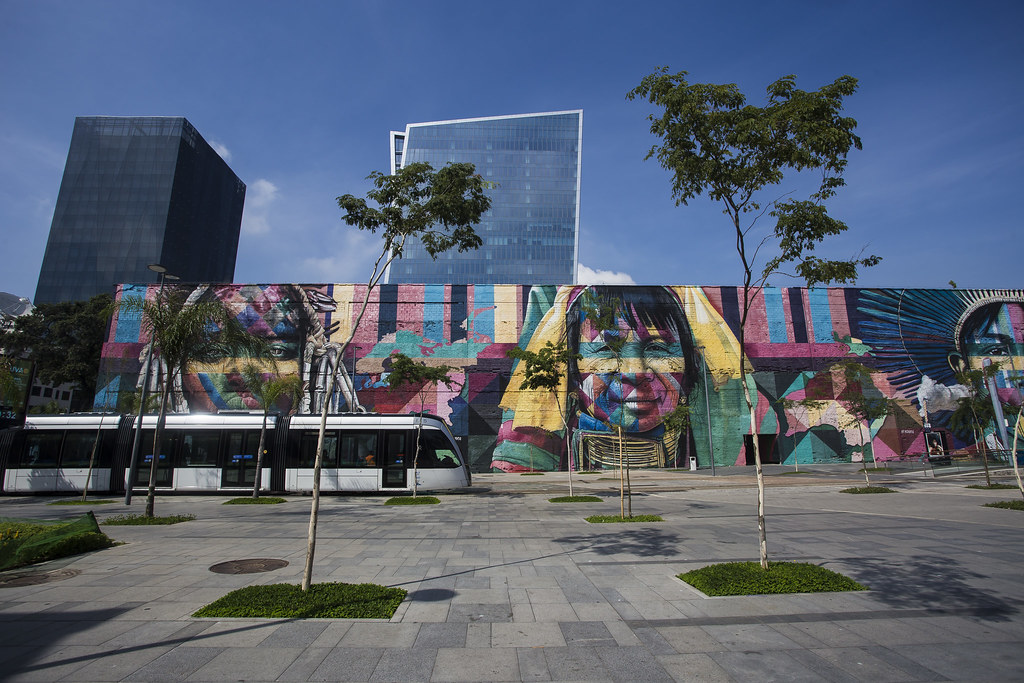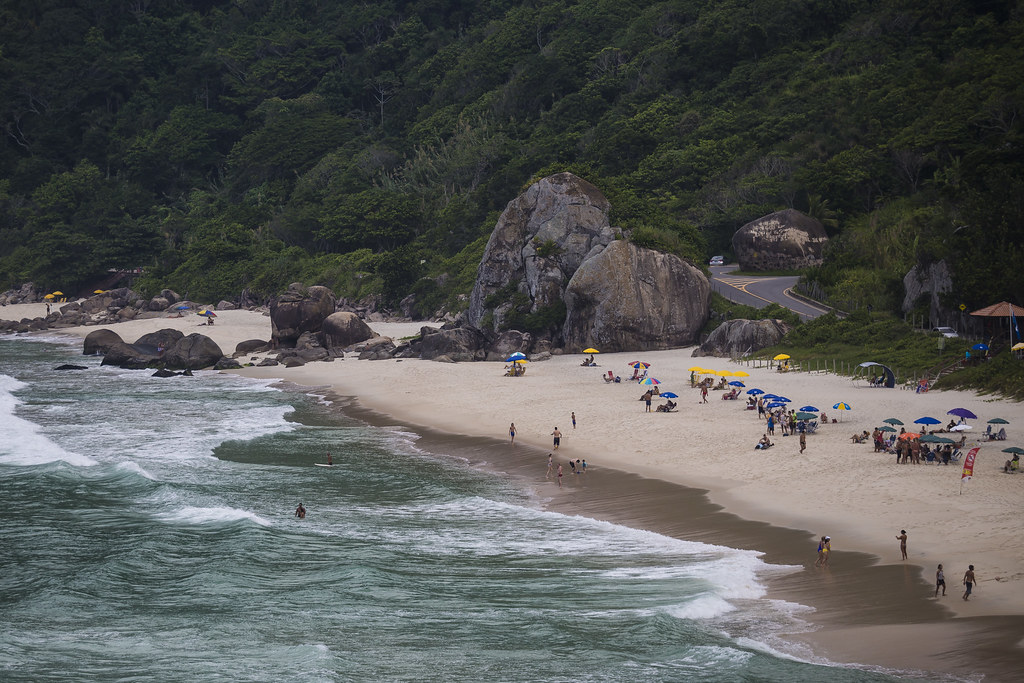Rio de Janeiro is one of the cities with the richest natural, cultural, and historical heritage in the world. If you are a traveler who enjoys landscapes, good food, art, and the lively atmosphere of big cities, you should consider this Brazilian city as your next vacation destination.
Here are some of the many activities you can do. The city offers such a variety of options that seven days will be just enough to experience them. Consider joining a guided tour to delve deeper into some sites and move around more easily and efficiently.
Day 1: Sugarloaf Mountain – The Best View of Rio de Janeiro
Sugarloaf Mountain, or Pão de Açúcar in Portuguese, is essentially a massive rock from the Cenozoic era. Some think its name comes from its resemblance to the sugarloafs made in the 16th and 17th centuries; others believe it derives from the Tupi-Guarani "Pau-nh-acuqua," meaning "the high hill."
This giant monolith is one of Rio de Janeiro's major tourist attractions. It's definitely worth the ascent of its 396 meters above sea level to enjoy the unique combination of beach, vegetation, and cityscape views.
You can ride the cable car (bondinho) from Praia Vermelha (Red Beach), or opt for a 30-minute hike along a trail starting from the side of the same beach.
In either case, we recommend stopping at Morro da Urca to enjoy the viewpoints and visit the Cocuruto exhibition room to learn about the history of the cable car.
At Morro da Urca, you'll need to take the cable car again to reach Sugarloaf Mountain. Don’t miss the unparalleled view from the summit. Both Morro da Urca and Sugarloaf Mountain are part of a major tourist area in Rio, with a good range of restaurants, bars, and shops.
Check the official website of the Sugarloaf Mountain Park for ticket information: Sugarloaf Mountain Tickets.
Day 2: Tijuca National Park and Christ the Redeemer – The Natural Wonders of Rio
Visiting Christ the Redeemer is another must-do experience in Rio de Janeiro. The statue stands 38 meters tall, but since it’s located on the Corcovado Mountain, it reaches 709 meters above sea level. This symbol of Brazilian hope and faith is one of the New Seven Wonders of the World.
There are several ways to reach the feet of Christ the Redeemer; the most popular is the Corcovado train. The ride takes about 20 minutes and takes you through Tijuca National Park, the largest urban forest in the world. You can buy tickets in advance on the Trem do Corcovado website.
Another option is to take the official vans that go directly to the base of Christ the Redeemer. Tickets can be purchased on the Van Oficial – Paineiras Corcovado website.
The third option is to hike. The trail begins at Parque Lage and ends at the Corcovado. The hike, approximately 2.5 kilometers long, takes between 1.5 and 2 hours.
While visiting Christ the Redeemer, take the opportunity to explore Parque Lage. This former estate, now home to the Visual Arts School, features a central pool and European-style gardens, making it a must-see for history, architecture, and art enthusiasts.

Day 3: Copacabana and Ipanema Beaches – Experience Carioca Life
Copacabana Beach is the most famous in Rio de Janeiro. The design of its promenade, known as the Orla, mimics the ocean waves with black and white stones. Copacabana is divided into smaller zones, each with its own atmosphere.
Around the beach, there are numerous restaurants. We recommend refreshing yourself with a traditional caipirinha, a drink made with cachaça (sugarcane spirit) and lime juice, or a coconut batida, made with coconut milk, cachaça, and sugar.
The nightlife in Copacabana is unmatched. Marvel at the lights of the promenade and enjoy a treat at one of the food kiosks. If you like biking, take advantage of the weekends when the promenade is closed to traffic and becomes a large bike lane.
Ipanema Beach is next to Copacabana. You can get from one beach to the other in under 10 minutes by metro, bus, or taxi. Walking between them will take around 35 minutes.
Like Copacabana, Ipanema is perfect for swimming, exercising, or shopping for souvenirs. Don’t forget to look for the statue of Tom Jobim, the composer of the famous bossa nova song "Garota de Ipanema" (The Girl from Ipanema), which put this beach on the map.
Day 4: Downtown and Selarón Steps – Exploring the History and Art of Rio
Downtown Rio de Janeiro blends colonial architecture with modern buildings. You can start your exploration in the city’s oldest area, Praça XV de Novembro, where the Imperial Palace and the Chafariz da Pirâmide, a 16th-century fountain, are located.
Next, head to Praça Cinelândia to see several architecturally significant buildings. Notable ones include the Municipal Theater, a majestic building in Baroque and Art Nouveau styles; the National Library, with its visually stunning interior; and the National Museum of Fine Arts, showcasing significant Brazilian art.
A 10-minute walk from Praça Cinelândia will take you to the Selarón Steps, created by Chilean artist Jorge Selarón. He began decorating the steps next to his home with tiles he made himself, eventually covering all 215 steps. Take your time to appreciate the intricate tile designs, some depicting a black woman, which have sparked curiosity about her identity. Many tiles come from different countries, a testament to the artist’s global connections.
Day 5: Guanabara Bay – The Heart of Rio
Guanabara Bay is Brazil's second-largest bay. It contains the port and city of Rio de Janeiro and 130 islands. In 2012, Guanabara Bay was declared a World Heritage Site due to its scenic beauty. It’s a popular spot for Brazilian families on weekends.
The only way to reach the bay is by car, taking around 50 minutes from downtown. For an authentic experience, try some activities that locals enjoy, such as biking on the bay’s bike path or having a picnic.
Alternatively, you can simply relax and enjoy the unique views of the bay. On one side, you have nature with the sea, the islands, and Sugarloaf Mountain in the distance. On the other, the boats and planes coming and going, as the bay is a major port next to Rio’s international airport.

Day 6: Arraial do Cabo Beaches – The Brazilian Caribbean
Spend your last days taking one of Rio de Janeiro’s excursions. Three hours from the city, Arraial do Cabo is known as the "Brazilian Caribbean." With its turquoise waters and idyllic beaches, it's a great option for a day trip, including a boat tour and fresh seafood.
In addition to its natural beauty, Arraial do Cabo is famous for its marine life. You can snorkel or dive to see a variety of fish and turtles in the clear waters. You might also take a boat tour to the best spots in the area, such as Praia do Forno, Praia dos Anjos, or Praia Grande.
Day 7: Angra dos Reis – A Paradise of Islands
In Angra dos Reis, time seems to stand still. This tropical paradise is surrounded by over 365 islands forming an impressive archipelago in the state of Rio de Janeiro. Considered one of Brazil’s most beautiful regions, you can take a boat tour of the archipelago to admire its stunning beaches and crystal-clear waters.
We recommend stopping at Ilha Grande, the largest and most visited island, with beaches like Lopes Mendes and Praia do Aventureiro. You can also explore less-known but equally captivating islands such as Ilha de Jorge Grego or Ilha de Cataguases.
With a bit of luck, you might see dolphins or whales during your trip. Remember to bring sunscreen, a hat, and plenty of water to stay hydrated.

Recommended Excursions with Tangol Tours
To ensure a complete and unforgettable experience, Tangol Tours offers various excursions in Rio de Janeiro:
Dinner and Brazilian Music Show: Enjoy a traditional Brazilian dinner at a churrascaria while listening to popular music genres like samba or forró. Tangol Tours will pick you up and return you to your hotel. Book your spot here: Dinner and Brazilian Music Show at Rio Scenarium.
Lapa Bar Crawl: Explore Rio de Janeiro’s nightlife safely with this tour where you’ll taste artisanal cachaça, learn how to make caipirinhas, and visit different bars and clubs. The meeting point is at Hotel Selina Lapa. Book your spot here: Lapa Pub Crawl.
Rocinha Favela Tour: Discover the history and architecture of one of Brazil’s largest favelas with local guides. Tangol Tours will pick you up and return you to your hotel. Book your spot here: Rocinha Favela Tour.